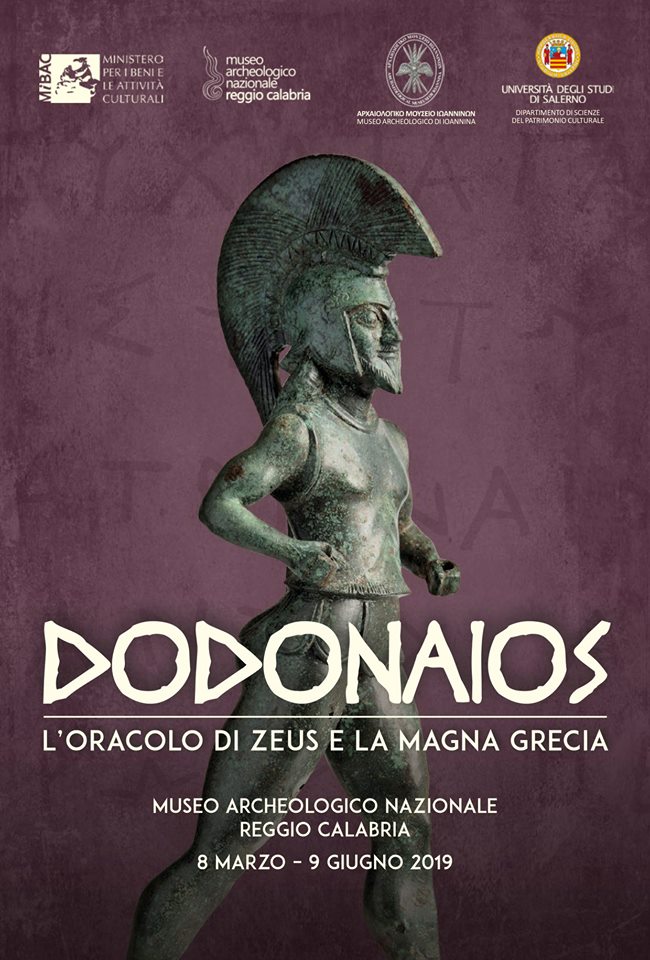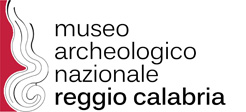DODONAIOS. Opening exhibition on Friday 8 March, at 5.30 pm

The main event of the Museum Week with free admission and of the entire season at the National Archaeological Museum of Reggio Calabria is the Inauguration of the great Exhibition “Dodonaios. The oracle of Zeus and the Magna Graecia”, the result of an important international collaboration, on the occasion of the International Women’s Day, on Friday, March 8th, at 5.30 pm, in the space of Place Paolo Orsi.
The editors – the MArRC director Carmelo Malacrino with Konstantinos I. Soueref, director of the Archaeological Museum of Ioannina (Greece) and Superintendent of Antiquities, and professors Fausto Longo and Luigi Vecchio, of the Department of Cultural Heritage Sciences of the University of Salerno – will present the project that was born in synergy between the Museum of Reggio Calabria, the Museum of Epirus and the University of Salerno.
The Exhibition will be open at level E, until June 9th 2019.
The Rector of the University of Salerno, Aurelio Tommasetti, will also be present at the opening ceremony.
The Exhibition will show objects by Dodona, home of the famous oracle, from the collection of the Archaeological Museum of Ioannina, some of which had never crossed the borders of Greece before. Among these, a selection of engraved lead laminas, in particular, referable to the Magno Greek cities.
The exhibition itinerary offers a reading of the relations between the regions on the two sides of the Ionian in antiquity, in the light of the most recent research on Dodona, located in the valley at the foot of a high mountain, in the heart of Epirus, in northern Greece. Oriental and it tells the archaeological and literary history of the sanctuary dedicated to Zeus, of which the tragedian Euripides and the historiographer Herodotus wrote. The oracle was known in all the cities of Magna Graecia, including many in Calabria (Hipponion, Reghion, Kroton, Sybaris, Thourioi, Heraklea, Metapontion, Taras). One of the curators, the archaeologist Luigi Vecchio, explains: “The pilgrims went to the sanctuary from every part of Epirus, Thessaly, Attica, Boeotia, Pelopponesian, Magna Graecia, to question the divinity mostly on personal matters – on marriage, on business, just like today with fortune tellers – in a practice that lasted many centuries, from VI to II a. C. at least. The most characteristic and suggestive thing – the scholar continues – is the modality in which this happened: in a written form, on very small laminettes of a few centimeters, which enter on the palm of a hand,by engraved letters of a few millimeters, which were folded or rolled up and presented for the application”. The “clients” of the oracle were of medium-low class, Vecchio adds. “The priestesses interpreted the answers of the god mostly through the sounds of nature: the rustling of the great sacred oak, the flight of the doves. Sounds that echoed in the silence of the valley”. In some laminettes the answer was engraved on the back. Some were “recycled” to ask new questions. The archaeologist Fausto Longo, co-curator for the University of Salerno, illustrates the project, “born from afar, in the collaboration relationship for the research on the sanctuary of Dodona between the Department of Sciences of the Cultural Heritage of the University Salerno with the Museum of Ioannina and the Superintendence of Epirus, which had produced a major exhibition in Athens, with the title ‘The oracle of sounds’. The Greek colleagues made themselves available to bring the laminettes on display for the first time in Italy. It has been – he affirms – an important opportunity to deepen the research on the relationships between these two Mediterranean regions, the Magna Graecia and the Epirus, which have many similarities, not only from the morphological and geographical point of view. The history of the sanctuary summarizes these analogies, which have been explored in an interdisciplinary perspective in the substantial catalog of the exhibition”.
The director of MArRC, Carmelo Malacrino, declares: “The bronze laminette referring to the colonies in Calabria, together with the other finds exhibited in this great exhibition, lead the visitor on a fascinating journey to discover the deep and ancient link between Italy and Greece, and in particular among the regions facing the Ionian Sea, which separates but above all unites the two shores”. The director Malacrino states: “The National Archaeological Museum of Reggio Calabria confirms its vocation as a cultural center in the Mediterranean basin and for the meeting of peoples who share cultures and traditions. Above all it is confirmed as a research laboratory and a place of synthesis between studies and activities carried out by different institutes, scattered throughout the world”.
At the web address: www.oracledodona.it is the multimedia support for the visit.
